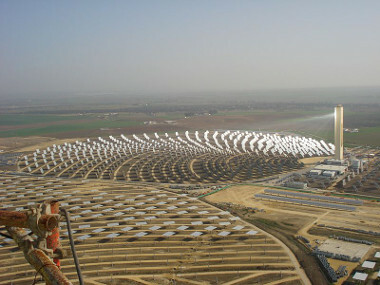The objectives of Portuguese colonization in Brazil inserted the agro-exporting character of our economy, which can be verified in the course of its main economic cycles that occurred in the colonial period: sugarcane and mining. Brazil did not go through the process known as the Industrial Revolution and was limited to the interests of the metropolis. Only when the Portuguese royal family moved to Brazil in 1808, towards the city of Rio de Janeiro, some structural improvements took place, roads and factories were created, as well as a better institutional and administrative organization.
The opening of Brazilian ports to international trade, carried out after great pressure from the British Empire, contributed to the importation of British machinery and products. After independence from Portugal in 1822, Brazil entered directly into England's sphere of influence. From this short period of Empire Brazil, which lasted until the proclamation of the Republic in 1889, the coffee cycle kept the primary format of the economy Brazilian, but in another context: contrary to what happened in previous cycles, for the first time a type of primitive accumulation of capitals. The Coffee Barons - the name given to the great coffee producers of the mid-19th century - were the forerunners of Brazilian private initiative, mainly in the Southeast. Many railroads in São Paulo were expanded through the private investments of landowners linked to the coffee industry.
Another decisive change was the cooling of the use of slave labor. External factors, such as laws that restricted the slave trade, as well as internal factors, highlighted the indebtedness of many rural producers to slave middlemen, made slavery increasingly restricted. Brazil created laws that slowly culminated in the end of slavery with the declaration of the Lei Áurea, in 1888. To establish a new relationship between the land factor and labor, European immigrants, predominantly Italians, were used.
Italian immigration and the expansion of the railways internalized the occupation in the state of São Paulo. Coffee currency led to the formation of banking groups and the attraction of capital for the emergence of factories, modernization of ports and diversification of trade. At the end of the 19th century, in the Amazon region, the rubber cycle also caused an accumulation of capital for the region, allowing the formation of some important centers amid large demographic gaps, mainly Belém and Manaus.
Do not stop now... There's more after the advertising ;)
After the imperial period, the 1st Republic or Old Republic began, considered in the view of many Brazilian social scientists as the consolidation of the agrarian elite as the holder of political power and the structuring of society, with few transformations in the predominantly agrarian.
The economic crisis of 1929 directly influenced the coffee economy, which ended up gradually declining due to the fall in the international price of coffee. Between 1930 and 1945, the country reached a new stage, known as the Getulista State, which significantly changed the productive structure of Brazil. Getúlio Vargas laid the foundations for a national industry, with the State acting as an entrepreneur and regulator of the economic sectors. Companies such as CSN (Companhia Siderúrgica Nacional) and the mining company Vale do Rio Doce, currently privatized, were conceived during this period. The National Petroleum Council was also created, a nationalist policy aimed at state control of oil exploration and production. Later, in 1952, when Vargas returned to the presidency democratically, Petrobras was created.
Based on a populist platform, Vargas introduced labor laws, organized the structure of unions, and increased industry participation in the composition of the Brazilian GDP, as well as encouraging the creation of sectors such as mechanics, electrical material, transport material, chemistry and pharmaceutical. Along with other underdeveloped nations such as Mexico, Argentina and South Africa, the country began its late industrialization.
Julio César Lázaro da Silva
Brazil School Collaborator
Graduated in Geography from Universidade Estadual Paulista - UNESP
Master in Human Geography from Universidade Estadual Paulista - UNESP
Would you like to reference this text in a school or academic work? Look:
SILVA, Julius César Lázaro da. "Historical-Economic Summary of Brazil: the end of colonialism and late capitalism"; Brazil School. Available in: https://brasilescola.uol.com.br/geografia/resumo-historico-economico-brasil-fim-colonialismo-capitalismo.htm. Accessed on June 28, 2021.


